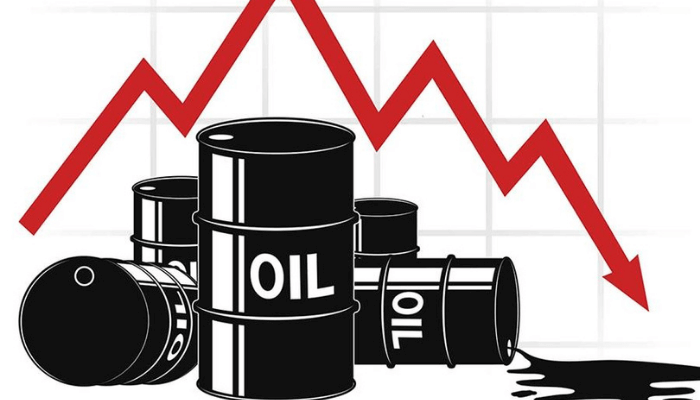Commodities News & Agribusiness
Oil Prices Slide over 2% on Iran Deal, OPEC+ Output, Economic Concerns
Published
8 months agoon

Crude oil prices fell more than 2% on Monday amid renewed optimism over U.S.-Iran nuclear negotiations and rising concerns about global economic stability.
Brent crude oil, against which Nigerian oil is priced, fell by 97 cents or 1.4% to $66.99 per barrel while U.S. West Texas Intermediate (WTI) dropped 96 cents or 1.5% to $63.72 as of 07:40 Nigerian time.
Read Also:
Similarly, light crude oil futures were trading at $62.15, down $1.86 or 2.91% by 11:18 a.m. Nigerian time, as traders responded to signals that Iranian oil could re-enter the market if diplomatic progress continues.
U.S. and Iranian officials have agreed to begin drafting a framework for reviving the 2015 nuclear deal, raising the possibility of easing sanctions that currently restrict Iran’s oil exports.
A senior U.S. official described the discussions as showing “very good progress,” prompting market speculation about increased global crude supply.
Market Pressured by Technical and Fundamental Signals
The latest price drop follows a failed attempt by crude futures to break key resistance at $64.18. With the market now trading below a pivot point at $63.06, analysts are eyeing near-term support at $59.33.
Crude prices also remain well below the 50-day and 200-day moving averages—$66.85 and $68.68 respectively—adding to bearish sentiment, according to data be market experts.
“Even the suggestion of a deal is enough to move the market,” an analyst said, adding that “Investors are pricing in the potential return of hundreds of thousands of barrels of Iranian crude.”
Economic Worries Undermine Demand Outlook
In addition to supply-side pressures, global economic concerns are further dampening the oil market. Sluggish data, trade tensions, and political pressure on the U.S. Federal Reserve are contributing to a cautious demand outlook.
Yeap Jun Rong, a strategist at IG, noted that investors remain hesitant about a sustained recovery in oil demand, especially with OPEC+ planning to increase production and signs of broader economic weakness emerging.
OPEC+ Output Plan Adds to Supply Concerns
OPEC+ is expected to proceed with its plan to raise output by 411,000 barrels per day in May. Although some overproducing members may scale back, the net increase in supply remains a concern for traders—particularly if Iranian barrels are added to the mix.
Outlook
With oil stuck below major resistance levels and little near-term clarity on demand recovery, analysts say the market could face further downside.
Weak liquidity due to the Easter holiday may have amplified Monday’s decline, but fundamentals suggest that a drop toward $59.33 remains possible—especially if upcoming U.S. economic data points to slower growth.
Share this:
- Click to share on X (Opens in new window) X
- Click to share on Facebook (Opens in new window) Facebook
- Click to share on WhatsApp (Opens in new window) WhatsApp
- Click to share on Pocket (Opens in new window) Pocket
- Click to share on Telegram (Opens in new window) Telegram
- Click to email a link to a friend (Opens in new window) Email
- Click to share on LinkedIn (Opens in new window) LinkedIn
You may like


Oil Price Appreciates as World Awaits Israel’s Response to Iran Attack


OPEC Says Fossil Fuels Remain Over 80% of Global Energy Mix


Oil Prices Down 1% Despite Pledged Output Cut in Saudi Oil


Nigeria Loses Crown to Angola as Africa’s Largest Oil Producer


Nigeria Loses 28 Million Barrels to Oil Theft, Vandalism in Six Months


Nigeria, Other OPEC Members Still in Red as May Output Recovers 120,000 bpd












